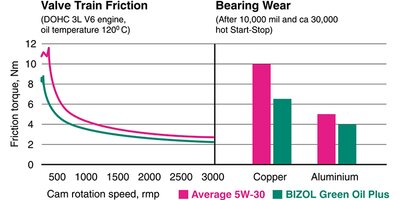BIZOL OIL EXPLAINER: CLASSIFICATION
Oils and terminology
Question, where do the different oils actually come from?
The graphic shows the production chain up to the point where the base oil is produced. The first step is extracting it from the ground. The next step is transporting the extracted crude oil to the refinery where it is split into fractions. The fractions are distilled as shown in the graphic and the lubricant manufacturer purchases the respective base oil from the refinery and turns it into the final product.

Figure 1 – Fractional distillation of oil
What does oil contain?
As we have discussed previously, engine oil is made up from a cocktail of base oil and additives. The graphic shows the typical make-up of a modern engine oil.

Figure 2 – Typical oil composition
It may come as a surprise to some that engine oil contains such a high percentage of additives. But without the additive package, the oil simply could not do what is required of it. The actual number of additives and the amount of additive used in a formulation varies. Most commercially available oils have a base oil content of around 60-90%, depending on the additive package needed to fulfil specifications.
Differences in the amount of wear inhibitors, corrosion inhibitors, antioxidants, viscosity index improvers etc affect how well the engine is protected from wear and the amount of deposit formation. The quality and suitability of an oil depends on the lubricant producer getting the science and the mix of additives absolutely right.
Before blinding you with science, we thought it might be a good idea to explain some of the jargon, so here’s a brief overview of some of the terminology used when talking about oil.

Table 1 – Overview of typical oil terminology

You might also like

Prof. Dr. Boris Zhmud, Head of R&D, BIZOL Germany

Within the realm of automotive care, few substances are as vital as motor oil, in ensuring the seamless operation of a vehicle's propelling device. It serves as the lifeblood of a motor, ensuring that the intricate machinery operates efficiently and without unnecessary friction. The functions of motor lubricant substance extend far beyond just lubrication, encompassing a range of critical tasks that contribute to the longevity and performance of a propelling mechanism. In this article, we’ll delve into the multifaceted functions of motor oil and explore how it plays a pivotal role in maintaining the health of automotive powerhouses.

The modern marvel of an internal combustion motor powers our vehicles, providing the strength and reliability we rely on for daily transportation. However, just like anything else subjected to constant use, motorized units experience wear and tear over time. Component deterioration can significantly impact performance and longevity. In this article, we will delve into the intricacies of engine wear meaning, explore the various causes behind it, provide actionable tips to reduce and prevent it. Furthermore, we will look at how specialized engine oils, such as BIZOL, play a crucial role in safeguarding your engine’s health. Let’s begin by understanding what engine wear is and the factors that contribute to it.

